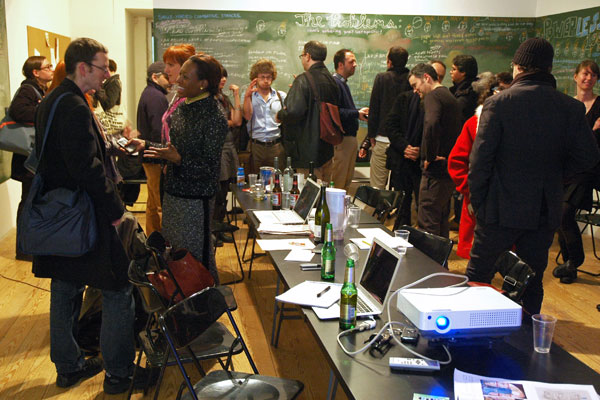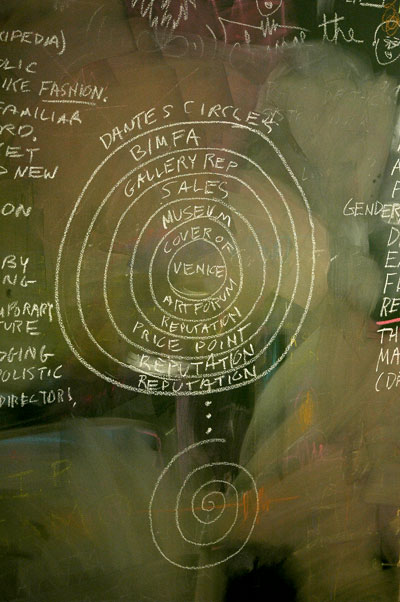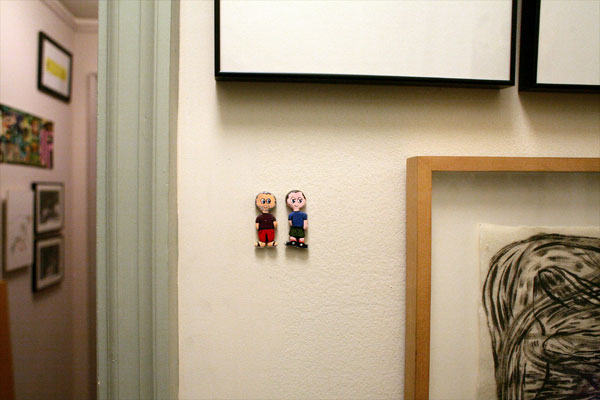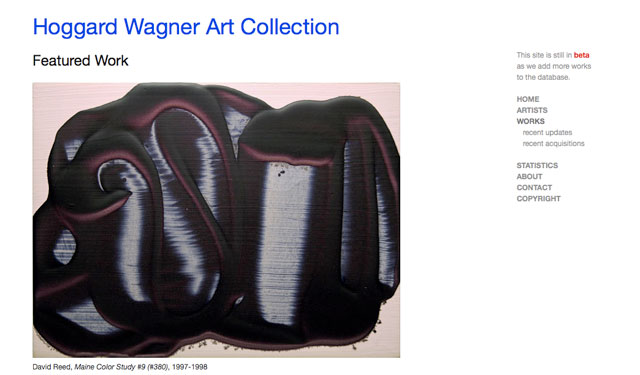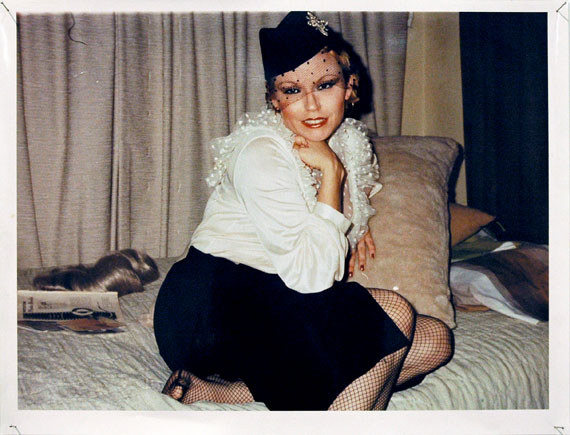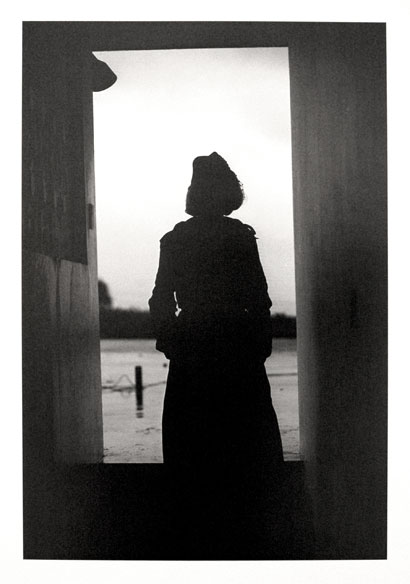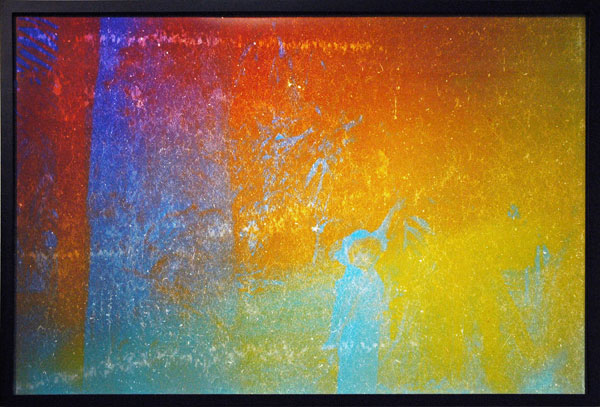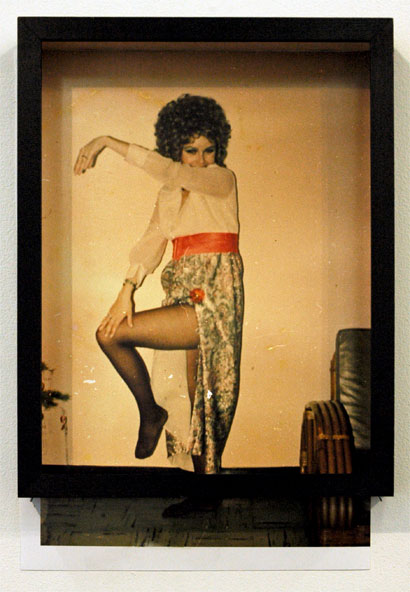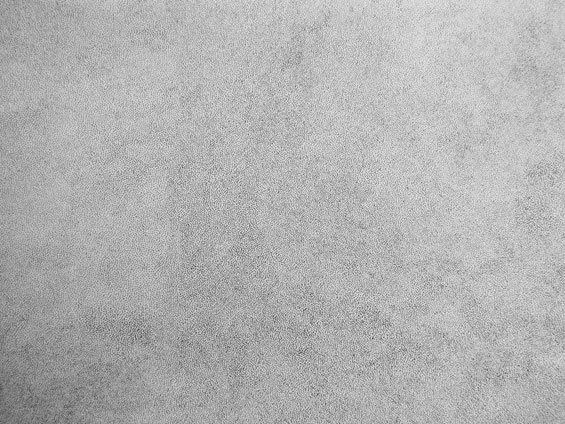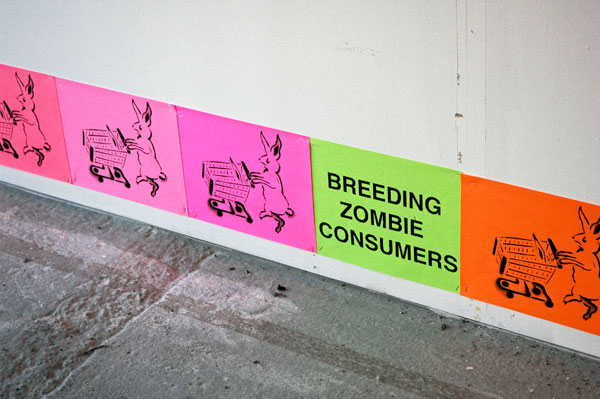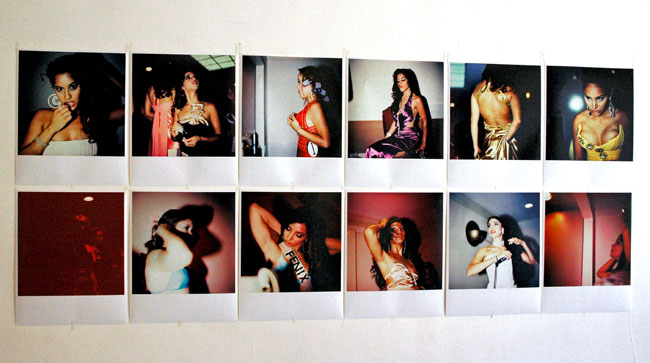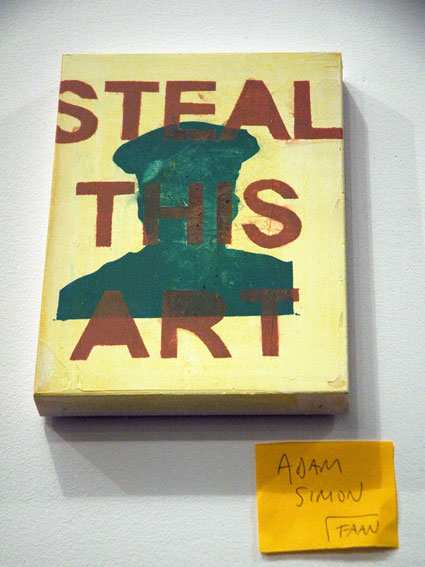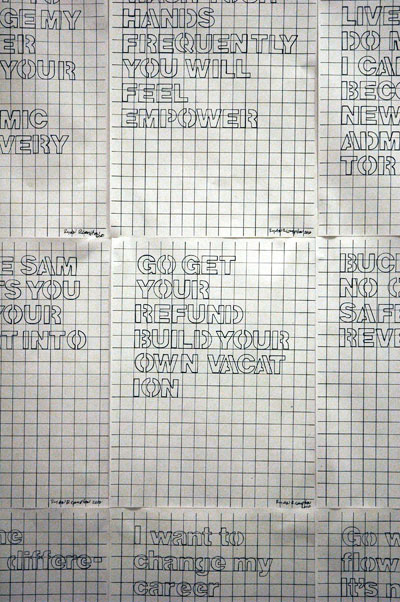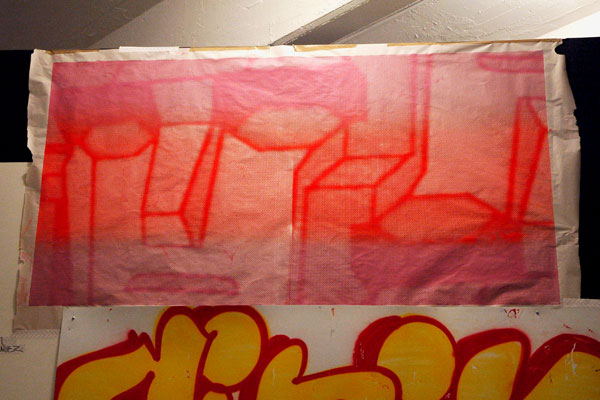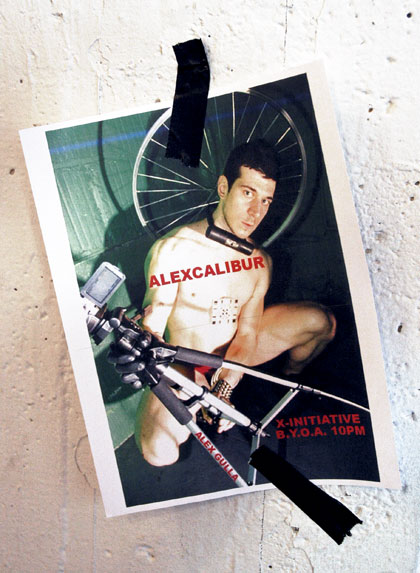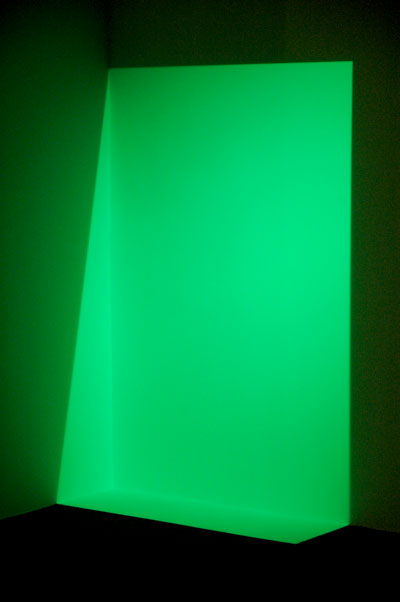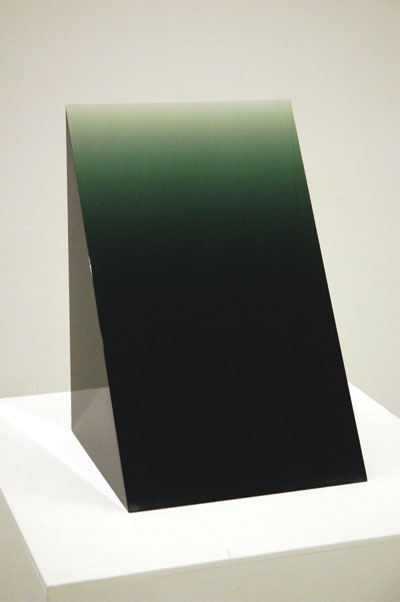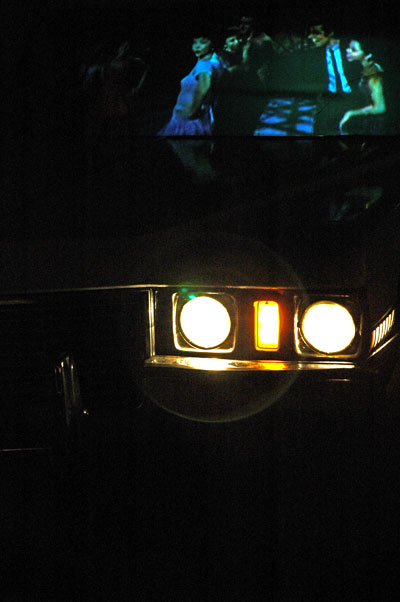
Bruce High Quality Foundation We Like America and America Likes Us 2010 vehicle and educational implements, dimensions variable [detail of installation]
ADDENDUM: [April 30, 2010] The entire sound video projected onto the inside of the windshield can be viewed here on vimeo, although as the April 20 comment at the bottom of this post (which alerted me to the link) says, it's not quite the same isolated from the ambulance/hearse; the experience of the darkness of the installation itself, the imperfect acoustic of the space, and the murky projection, can't really be reproduced on a computer screen.
I feel good about the Whitney 2010. While I like excitement, I resist hype like the plague. This Biennial has been accompanied by neither, which at the very least gives visitors a better chance to experience the individual works for themselves, and unencumbered with a theme. There is some very good, even awesome work on the three floors of the exhibition I saw at the preview (the floors not devoted to favorites from earlier years), but for me none of them had so fundamental an impact as the Bruce High Quality Foundation installation, "We Like America and America Likes Us".
In "Art Class", a 2007 piece published on Artnet, Ben Davis had described Picasso's "Guernica" as "the most successful political image of the 20th century". His argument was that isolated artistic gestures cannot resolve social contradictions "without any social movement backing them up to give them force", continuing:
This does not mean that art or artists cannot play any political role; it is just that some model besides the middle-class one of "my art is my activism" is necessary, one based on concrete solidarity and practical action. Picasso’s Guernica is the most successful political image of the 20th century. Guernica, in fact, embodies the fact that art’s political value is determined in its relation with mass struggle, not in its individual content -- the imagery of the painting, moving as it is, is completely drawn from a vocabulary of forms Picasso had already developed in previous work. Yet, during the Spanish Civil War, after its appearance at the Spanish Republic’s booth at the 1937 World’s Fair, Guernica was literally removed from its stretchers, rolled up and toured internationally to win support for the Republican cause. In England, visitors brought boots to send to the front.
The Bruce High Quality Foundation seems to be taking a different route with its own institutional, social and political critique, probably one more suited to our own politically-lethargic times. Bruce's confrontations with our own tropes have been found just about everywhere: on our streets, our waters, our public plazas, even inside the galleries and expositions of the system they speak to.
I have to confess to a penchant for political art, and to a number of years spent in sort of a groupie relationship to this arts collective, and yet "We Like America and America Likes Us" is one of the most affecting works, in any genre, I've ever encountered. Where do we bring our allegorical boots?
We are all wounded, wrapped in felt. Are we inside an ambulance or a hearse? What is to be done?
Like much of what Bruce does, it's not conventionally "beautiful" - except as truth is beauty, and yet the incredibly elegiac recorded remembrance of "America" which accompanies the fast video montage of heterogeneous clips projected onto the tall Cadillac windshield is riveting, and profoundly moving.
I don't know the length of the loop (and there was no indication on the museum's wall text); but for all I know it could be as long as the melancholy story it tells.
Especially for those who will not be able to visit the Whitney, I have some excerpts. The text, recited by a luscious, soothing female voice, begins:
We like America. And America likes us. But somehow, something keeps us from getting it together. We come to America. We leave America. We sing songs and celebrate the happenstance of our first meeting – a memory reprised often enough that now we celebrate the occasions of our remembrance more often than their first cause.
And a little later I listened as the gender pronouns slithered over each other in ecstasy, and in sorrow:
We wished we could have fallen in love with America. She was beautiful, angelic even, but it never made sense. Even rolling around on the wall-to-wall of her parents’ living room with her hair in our teeth, even when our nails trenched the sweat down his back, and meeting his parents, America stayed simple somehow. He stayed an acquaintance, despite everything we shared. Just a friend. We could share anything and it would never go further than that.
No one really knows how love begins. A look on his face one time after we’d made love – a text message too soon after the last one. When did we become a thing to hold on to rather than just something to hold? We didn’t know America was in love with us until it was too late. Maybe we couldn’t have done anything about it anyway. America fell in love with the idea of us, with some fantasy of us, some fantasy of what America and us together would be, before we had a chance to tell him it could never work, we weren’t ready for a relationship, we weren’t comfortable being needed, we didn’t have the resources to be America’s dream.
It wasn’t easy letting America down. As we stuttered through our rehearsed speech we watched the change on her face. We could see the zoom lens of her attention clock away. We could feel ourselves receding back into the blur of the general population.
The last lines are:
There was a time we thought we were nothing without America. When she left, we realized all the excuses we’d been making. All the problems we’d been trying not to address. We drunk dialed our memory of America just to hear what we were thinking. We worked late and we told ourselves we had to, that the work came first, that this was an important time in our lives and that love could wait. Just wait a little longer and we’d fix everything, we’d say. Solving the America problem, our lack of attention, our disinterest in sex, our never being home, our thinking of her as a problem – it would have to wait.

[installation view of the rear of the curtained 1972 Miller-Meteor ambulance/hearse]
[text from the audio of the installation courtesy of the artists]
